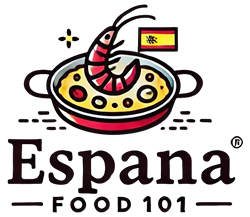Northern Spain has a rich and varied culinary heritage, and one of its most celebrated ingredients is the piquillo pepper. These small, red peppers are not only iconic in flavor but also deeply rooted in the region’s traditional cooking methods. From tapas bars to home kitchens, piquillo peppers find their way into countless dishes, offering a distinct sweetness and subtle smokiness that elevates even the simplest meal. For anyone interested in exploring Northern Spanish cuisine, understanding the importance of piquillo peppers is essential.
In this article, we’ll take a close look at how piquillo peppers have shaped the culinary identity of Northern Spain. We’ll explore their unique characteristics, traditional uses, and why they’re considered a staple in this part of the country. Whether you’re a home cook looking to incorporate new flavors or a traveler eager to immerse yourself in the region’s food culture, piquillo peppers are a must-know ingredient.
What Are Piquillo Peppers?
Piquillo peppers are small, bright red peppers that come from the region of Navarre in Northern Spain. Known for their mild sweetness, they are typically roasted, peeled, and preserved in jars, a method that preserves their flavor without the need for vinegar or other strong preservatives. These peppers are often confused with other varieties, but they have a distinct lack of heat compared to their chili pepper cousins, making them suitable for a variety of palates.
The name “piquillo” translates to “little beak,” which refers to their pointed shape. While they are most often associated with the town of Lodosa in Navarre, their use extends throughout Northern Spanish cuisine. Whether stuffed with meats or seafood, served as part of a tapas platter, or used in stews and sauces, piquillo peppers add both flavor and a touch of tradition to many dishes.
Helpful Hint:
When buying piquillo peppers, look for those labeled “Piquillo de Lodosa,” as this indicates they are sourced from the region of Navarre and meet strict quality standards.
Why Are Piquillo Peppers So Important in Northern Spanish Cuisine?
The significance of piquillo peppers in Northern Spanish cuisine can be traced back to their versatility and their connection to the region’s agricultural history. Northern Spain has long been known for its fertile lands, which produce a variety of crops, including these prized peppers. Historically, they were a way for families to preserve food for the winter months, but today they are enjoyed year-round as a key ingredient in many classic recipes.
Aside from their regional pride, piquillo peppers are cherished for their balance of sweetness and smokiness, a flavor profile that complements the robust ingredients common in Northern Spanish dishes. Think of rich meats like chorizo or morcilla (blood sausage), earthy mushrooms, and seafood fresh from the Bay of Biscay. Piquillo peppers bring brightness and a delicate contrast to these flavors.
How Piquillo Peppers Are Typically Used
One of the best things about piquillo peppers is how versatile they are. In Northern Spain, you’ll find them used in a wide array of dishes, from appetizers to main courses. Let’s look at some of the traditional ways they’re prepared:
- Stuffed Piquillo Peppers: One of the most popular ways to enjoy piquillo peppers is by stuffing them. Typical fillings include seafood like crab or shrimp, but meats such as beef or pork are also common. The mild sweetness of the pepper balances the richness of the stuffing.
- As a Tapas Dish: Piquillo peppers often feature in tapas, either as part of a mixed plate or served on their own with olive oil and garlic. The natural smokiness from roasting adds depth to their flavor, making them a standout ingredient on any tapas menu.
- In Stews and Sauces: Northern Spain is famous for its hearty stews, and piquillo peppers are frequently used in these dishes. They can add a touch of sweetness and complexity to tomato-based sauces, making them a favorite in both meat and seafood stews.
Are Piquillo Peppers Healthy?
Besides being delicious, piquillo peppers pack a nutritional punch. They are low in calories but rich in antioxidants, especially vitamin C. This makes them not only a flavorful addition to dishes but a healthy one too. Moreover, the preservation method of roasting and storing them in their own juices ensures that they maintain most of their nutritional content.
Stats:
According to health studies, a 100-gram serving of piquillo peppers contains more than 160% of the recommended daily intake of vitamin C. This makes them a great immune booster, particularly in the colder months.
What Makes Piquillo Peppers Unique?
There are many types of peppers grown throughout Spain, but what makes piquillo peppers truly unique? Aside from their flavor, it’s the way they are prepared. Piquillo peppers are roasted over an open flame, giving them their signature smoky flavor, which is then paired with their natural sweetness. After roasting, they are peeled by hand and packed into jars without brine, vinegar, or any harsh preservatives. This method preserves their natural flavor, keeping them tender and ready to use.
Unlike some other pepper varieties, piquillo peppers are not spicy, making them accessible to a broader audience. Their lack of heat, combined with their vibrant flavor, allows them to shine in dishes without overpowering other ingredients. This balance has made them a favorite in Northern Spanish kitchens for centuries.
How to Cook with Piquillo Peppers at Home
Cooking with piquillo peppers at home is easy, and they are widely available in grocery stores or online. Since they come pre-roasted and jarred, they are ready to use in recipes without much additional preparation. Here are a few tips for incorporating them into your cooking:
- Use Them in Sauces: Blend piquillo peppers into a smooth sauce to serve over grilled meats or fish. Their natural sweetness pairs well with smoky or char-grilled flavors.
- Stuff Them: As mentioned earlier, piquillo peppers are perfect for stuffing. You can experiment with different fillings, from cheeses to grains like quinoa or couscous, for a delicious and easy meal.
- Add Them to Sandwiches: Piquillo peppers are a great addition to sandwiches, especially when paired with bold Spanish cheeses like Manchego or a slice of jamón ibérico.
By keeping a jar of piquillo peppers in your pantry, you’ll always have a flavorful ingredient on hand that can elevate your everyday meals.
Popular Dishes Using Piquillo Peppers
| Dish Name | Main Ingredients | Common Pairings | Cooking Method |
|---|---|---|---|
| Piquillos Rellenos | Piquillo peppers, seafood or minced meat | Aioli, tomato sauce | Stuffed and baked |
| Piquillos with Bacalao | Piquillo peppers, salted cod | Olive oil, garlic | Baked |
| Piquillo Pepper Tapas | Piquillo peppers, olive oil, garlic | Cheese, ham, bread | Served as cold tapas |
| Piquillo Pepper Sauce | Piquillo peppers, garlic, olive oil | Grilled meats, seafood | Blended into a smooth sauce |
What Are the Best Dishes to Try with Piquillo Peppers?
If you’re visiting Northern Spain, or simply want to try your hand at making traditional dishes at home, there are several must-try recipes that showcase piquillo peppers. These dishes emphasize the pepper’s unique flavor and versatility, allowing it to shine alongside other regional ingredients. Here are some of the best dishes you should try:
Piquillos Rellenos (Stuffed Piquillo Peppers)
Perhaps the most iconic dish using piquillo peppers is “Piquillos Rellenos,” or stuffed piquillo peppers. This dish can be found in tapas bars all over Northern Spain and features piquillo peppers stuffed with a variety of fillings. Seafood, such as cod or shrimp, is a popular choice, but you’ll also find versions filled with minced meat, rice, or even vegetables. The peppers are usually served warm, often with a rich, creamy sauce on top.
The contrast between the sweetness of the pepper and the savory filling makes this dish unforgettable. While it’s relatively simple to make at home, piquillos rellenos are a quintessential part of any visit to the region.
Helpful Hint:
For an authentic flavor, try stuffing piquillo peppers with salt cod or tuna, as these ingredients are commonly used in the Basque Country. Serve with a light garlic aioli to enhance the natural sweetness of the peppers.
Piquillo Peppers with Bacalao (Salted Cod)
Northern Spain, particularly the Basque Country, is famous for its seafood, and bacalao (salt cod) is one of the most beloved ingredients in the region. Piquillo peppers and bacalao are often paired together in a variety of dishes. In one traditional recipe, the salt cod is cooked with garlic and olive oil, then stuffed into piquillo peppers and baked.
The combination of the delicate, flaky fish and the slightly smoky, sweet peppers creates a harmonious balance of flavors. It’s a dish that showcases the best of Northern Spanish ingredients, and it’s a favorite among locals and visitors alike.
How Piquillo Peppers Are Grown and Harvested
The cultivation of piquillo peppers is a tradition passed down through generations in Northern Spain, particularly in the region of Navarre. The peppers are grown in the fertile soils of this area and harvested by hand in the late summer and early fall. What makes piquillo peppers so special is not just their flavor, but the care and attention that goes into their growing and harvesting process.
The peppers are typically grown in small, family-owned farms where traditional methods are still used. Once harvested, the peppers are roasted over an open flame, peeled by hand, and packed into jars without preservatives. This labor-intensive process ensures that the peppers retain their natural sweetness and smoky flavor.
Stats:
It’s estimated that more than 1.5 million kilos of piquillo peppers are produced annually in the Lodosa region of Navarre, reflecting the deep cultural significance of these peppers in the local economy.
The Denomination of Origin (DO) Status
To protect the quality and authenticity of piquillo peppers, those grown in the region of Lodosa have been granted Denomination of Origin (DO) status. This means that only peppers grown, harvested, and prepared in this area can carry the official “Piquillo de Lodosa” label.
The DO status ensures that consumers are getting a product of the highest quality, with the flavor and texture that piquillo peppers are known for. When shopping for piquillo peppers, look for the DO label to guarantee you’re getting the real thing.
Why Piquillo Peppers Deserve a Spot in Your Kitchen
While piquillo peppers are a staple in Northern Spanish cuisine, they’re also an ingredient that can elevate everyday meals, no matter where you live. Their natural sweetness, coupled with their smoky, roasted flavor, makes them a versatile addition to a wide variety of dishes.
Whether you’re stuffing them with your favorite filling, using them in sauces, or simply enjoying them straight from the jar, piquillo peppers are an ingredient that brings a taste of Northern Spain to your kitchen. Their ability to enhance both simple and complex dishes alike is what makes them so beloved by chefs and home cooks around the world.
So, the next time you’re looking to add a burst of flavor to your meal, consider reaching for a jar of piquillo peppers. Their unique taste and versatility will not disappoint.
FAQs
Wrapping Up
Piquillo peppers are a standout ingredient in Northern Spanish cuisine, celebrated for their unique balance of sweetness and smokiness. Their importance goes beyond flavor; they represent the rich agricultural traditions of the Navarre region. Whether served stuffed, blended into sauces, or enjoyed straight from the jar, piquillo peppers offer versatility that can enhance a wide variety of dishes. Their nutritional benefits, along with their bold yet approachable flavor, make them a must-have ingredient for anyone looking to explore authentic Spanish cooking.
As you experiment with piquillo peppers, you’ll find that they bring a distinctive taste of Northern Spain to your kitchen, enriching your meals and introducing a key element of Spanish culinary heritage. So, grab a jar, try out some classic recipes, and experience the essence of Spain’s food culture right from your own home.







